If you’re running an eCommerce store, you’ll probably already know how difficult it can be to get your products and your store visible online, especially when you’re just starting out.
When you haven’t got an unlimited marketing or advertising budget, it might seem impossible to get your products or services seen – but with so many new avenues for marketing online, it’s actually easier than ever.
In this guide, we’re going to go over 7 ways you can promote your eCommerce website, including several options that cost absolutely nothing! Let’s take a look.
Social media presence
One of the easiest ways to promote your eCommerce website is by having a strong social media presence – and even better, it’s free! You don’t necessarily need to always cater your social media content to promote your eCommerce store – you can simply gain traction on social media by talking about global events, responding to customers, or simply sharing high-value content that your followers or readers will find useful. By increasing your following on social media with relevant posts, you’ll be able to increase your reach within your target market.
Having a strong social media presence also helps build your brand identity and brand authority, while allowing you to build a loyal customer base for free.

In-app purchases on social media
Aside from having a positive, active social media presence, you can also use social media to actually sell your products directly to your followers or subscribers. Instagram, Facebook, Pinterest and Tik Tok now have in-app purchase options available for business accounts, allowing customers to make a purchase directly from their news feed.
With almost every study conducted on the subject concluding that social media is one of the most powerful forms of advertising, you should incorporate this strategy into your marketing model.
SEO marketing
If you aren’t already using SEO strategies on your website, you’re missing out on potentially thousands of site visitors and easy sales. SEO marketing (search engine optimisation marketing) refers to how well your site ranks on search engines such as Google. Having a poor ranking means that it will probably be difficult for you to get organic traffic from web searches, which can mean missing out on an easy way to gain new customers.
What’s great about SEO is that with the right strategy, you’re able to promote your business to customers searching for your exact products or services. For example, if your eCommerce store is the first Google search result when a user types in the phrase “vegan hot chocolate”, you’re exposing your business to new customers who may never have found your services otherwise.
A good SEO strategy also offers long-term benefits for your eCommerce store; unlike PPC advertising, your SEO ranking doesn’t disappear as soon as you stop paying for your advertising budget. A website that has been skillfully optimised by an eCommerce SEO agency can remain at the top of Google’s search results for years.
PPC advertising
PPC advertising is another way you can promote and market your eCommerce store – but it is probably the most costly option on this list. PPC advertising (pay-per-click advertising) involves paying advertisers (such as Google or Twitter) to promote your products on their platform, and you pay the platform every time someone clicks on your advertisement.
While this can be a useful marketing strategy if you’re a new company looking to make quick gains, it’s a bad idea if your website isn’t yet optimised for user experience (UX). If you end up having a poor conversion rate, all that ad money will have been money down the drain. Before opting for an expensive PPC ad campaign, it might be a good idea to run an SEO audit on your site to test for any UX problems.
Make your business multi-channel
If you’re selling a physical or digitally-downloadable product, there’s no need to stick to one eCommerce platform. There are no rules in place to stop you from creating a multi-channel business and selling your products everywhere; from eBay to Amazon, Etsy to Instagram – and don’t forget your own eCommerce website! In fact, the more channels the better; when you have several streams of income, you’re protected in the event where one platform shuts down or goes out of business.
Partner with relevant influencers
Companies understand the power of word-of-mouth online, and this is why so many social networks have recently been transformed into reliable advertising platforms. By partnering up with influencers, you’ll be able to target your target market more easily than a traditional campaign. You’re also more likely to build trust with new customers, as influencer features and reviews tend to fare better than traditional advertising campaigns. However, like PPC, partnering with influencers can be a costly enterprise, with some high-profile influencers demanding four to five figures for just one or two Instagram posts.
If you’re going to partner with an influencer, make sure that their current audience corresponds with your target market, and make sure that they have enough followers and online engagement to make the investment worth your time (and money!)
Build an email list
Building an email list is a great way to retain existing customers, and customer retention is much cheaper than searching for new leads. The main difficulty when it comes to creating an email list is actually being able to obtain your customer’s email address in the first place. Many customers are tired of unsubscribing to spammy marketing emails, and now systematically ask not to be sent promotional email marketing when they sign up for an account with an eCommerce business.
To get around this, it’s a good idea to offer something exclusive that will motivate your customers to opt-in and subscribe. In the marketing world, this is referred to as a ‘lead magnet’, and can be anything from a generous discount code to exclusive offers.
Once you’ve secured your email list, don’t overdo it and start spamming daily emails. You should only email your subscribers when you have something interesting to offer, such as a promotional sale, a new product, or an update to your services or policies.











